Adam Alexander – aka ‘the seed detective‘ – has spent much of his life in search of delicious vegetables from around the world.
On his plot on 3.5 acres in Chepstow, Wales, he grows around 100 varieties of veg – and he dries, saves and gives away the seeds, so others can benefit from the diversity of his collection.
Mr Alexander has now written a book, The Seed Detective, in which he shares stories of his seed-seeking travels.
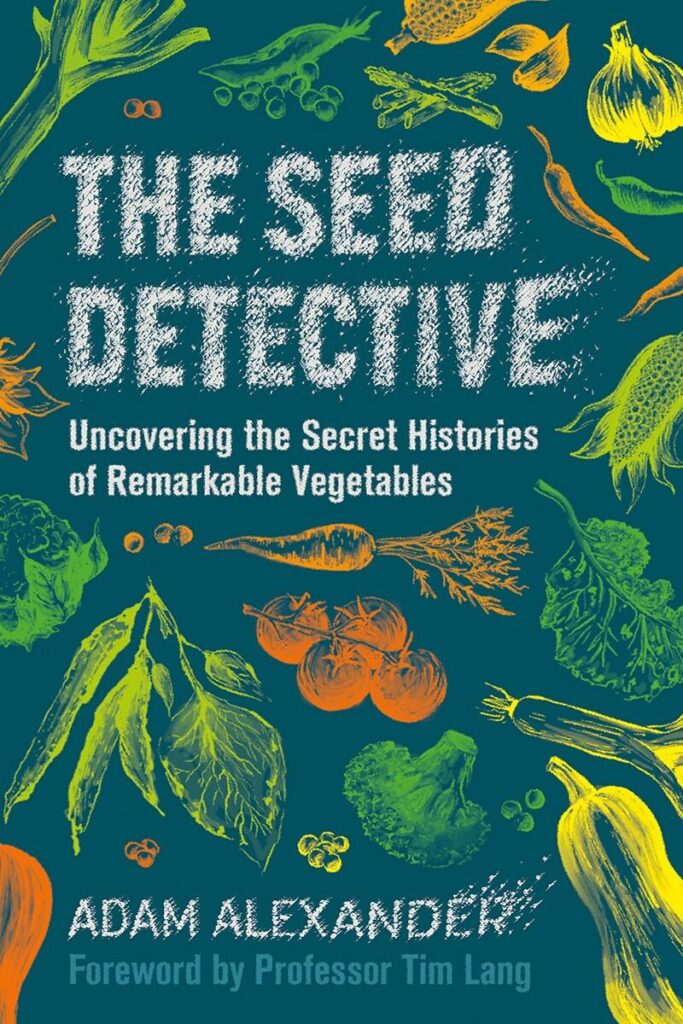
“Saving your own seed enables you to have seed which is more adapted to growing in local conditions, tends to germinate more quickly so it has greater viability, and above all, you have its provenance. You know where it’s come from,” he enthuses.
It’s also cheaper than buying new packets every year. Plus, many seeds you buy now are F1 hybrids, which won’t come back true in subsequent years. You need to buy open pollinated varieties for produce to come back true, Mr Alexander advises.
Here are some tips from the seed detective, on how to collect seeds from some of our most popular veg.
Peas and beans
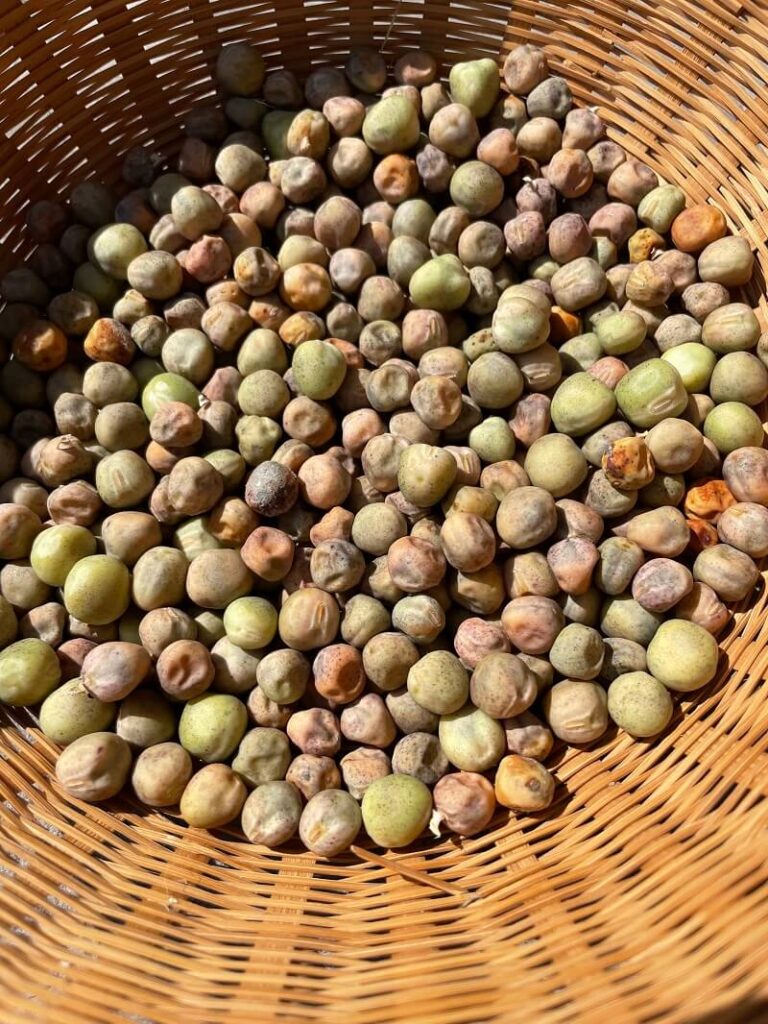
“All you need to do is grow your crop and leave a few on the plant, let them ripen and dry. If the weather is wet, pick them off when they are nearly dry and starting to shrivel and put them in a dry, airy place like a shed or windowsill, then shell the peas and the beans, put them in an envelope somewhere cool and dry.
“For me, because I am storing seeds often for years and I have so many – nearly 500 varieties at the moment – I’m a great believer in keeping them cold and dry, so everything goes into a jam jar or envelope and then into an airtight plastic box and into the fridge.
“The plants which are really easy to save seeds from because they are self-fertile are things such as climbing French beans – ‘Delinel’ is a good variety,” he adds.
Read: Discover the power of purple vegies
Tomatoes
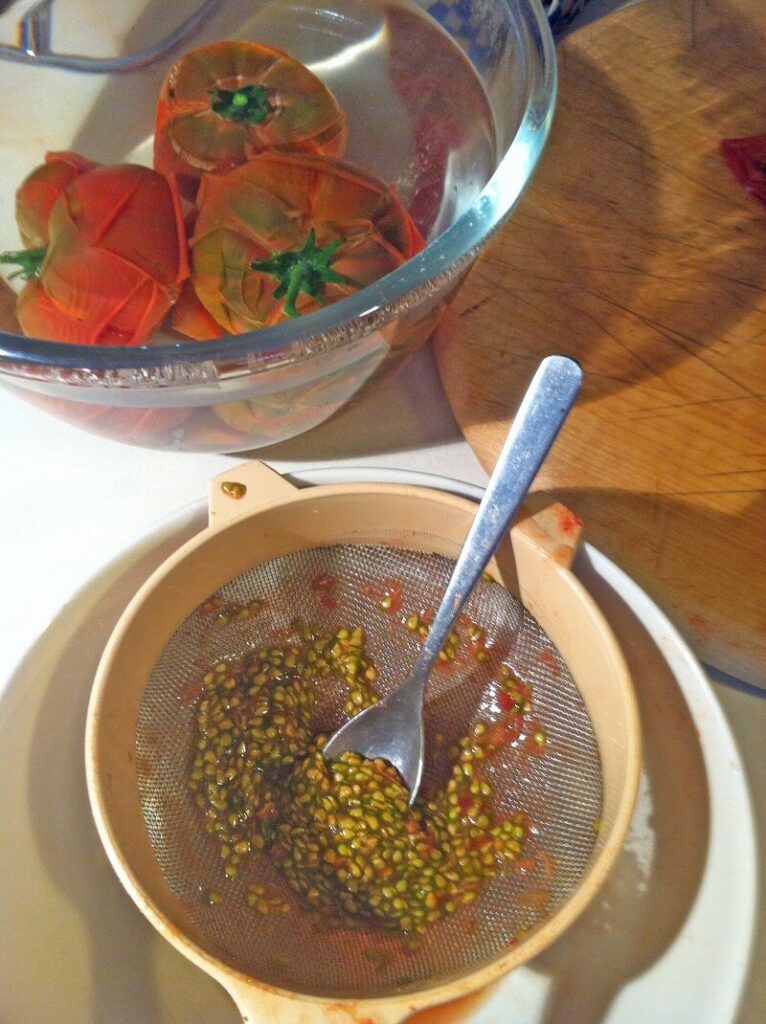
“Grow open pollinated varieties. The main seed companies do sell them, but so do smaller seed merchants. Pick the tomatoes when they are ripe, slice them into halves or quarters, scoop the seeds out, rinse them in a sieve under a cold tap to get rid of the pulp and give them a good wash. You don’t have to be gentle with them,” he says.
“Then spread them out thinly on to a piece of greaseproof paper, leave them in a warm, airy environment like a kitchen windowsill, but out of direct sunlight. After two to three days, get a knife and scrape them off the greaseproof paper, rub them between your fingers just to separate them, and leave them on the paper for maybe a week or so to get really dry, put them in an envelope, then in a plastic box in a cool place.
“Put the name of the variety on the envelope and the year. Tomato seeds can last for 10 years if they are kept cold and dry.”
Pumpkin and zucchini

“When you harvest pumpkin in the autumn, scoop the seeds out and rinse them in a colander under the tap to get rid of the pulp, then put them on greaseproof paper and let them dry.” Mr Alexander adds.
“With zucchinis, leave them until they’ve grown really big, like a huge marrow, then cut them off the plant, cut them in half and scoop the seeds out, rinse them under the tap in a colander and then spread them out to dry on greaseproof paper in an airy place. You know when they are really dry because when you break the seeds in half, they snap.”
Read: Why and how to use whole vegetable when cooking
Lettuce
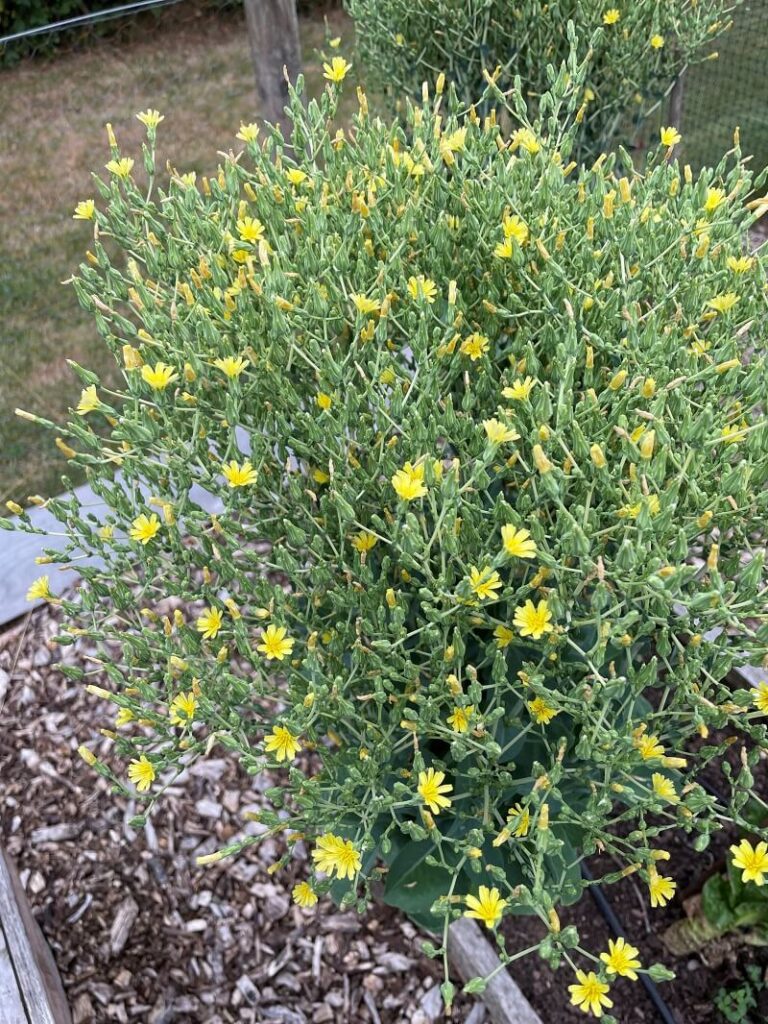
“Invariably, we grow too many and some of them will bolt (run to seed). Allowing even one lettuce to bolt will give you seeds. When first lettuces start bolting in early summer, let one flower. They will grow quite tall, so I tend to stake them and after a few months, the flowers have been pollinated by bees and you will then get these little puffs like cotton wool buds and inside them will be black or white seeds,” he says.
“Pick off the cotton buds with the seeds inside, rub them through your hands to dislodge the seeds and gently blow off the cotton wool. One lettuce plant will give you thousands of seeds.”
Chillies and capsicums
View this post on Instagram
“Saving seeds of chillies and capsicums is very easy, but they have to be ripe, not green. Simply scrape the seeds out of the ripe fruit and place them on greaseproof paper on a sunny windowsill and within two or three days, they are ready for storage.”
Spinach
“You don’t want to save the seed of spinach, which bolts quickly in the summer, but if you have spinach which has grown through the winter, leave a few plants in the ground, thinning the plants out to a foot apart,” suggests Mr Alexander. “They are pollinated by wind. Let the plants continue to grow through the summer and the seed will ripen. As you get the ripe seedheads, which can grow to about 6ft, bend them over a bag and give them a good shake.”
Read: Keys to growing enough vegies to feed yourself
Parsnips
View this post on Instagram
“If you’ve left a few parsnips in the ground over winter and into spring, just let them bolt. You get big clusters of small white flowers in summer. Carefully cut off the flowering stems, put them in a big paper bag and hang them up in the shed to complete ripening,” says Mr Alexander.
“Leave them for a few weeks and the seeds will all fall out. When parsnip seed is really fresh, it’s incredibly viable.”
The Seed Detective by Adam Alexander is published by Chelsea Green.
What vegies are you growing this spring? Let us know in the comments section below.
– With PA

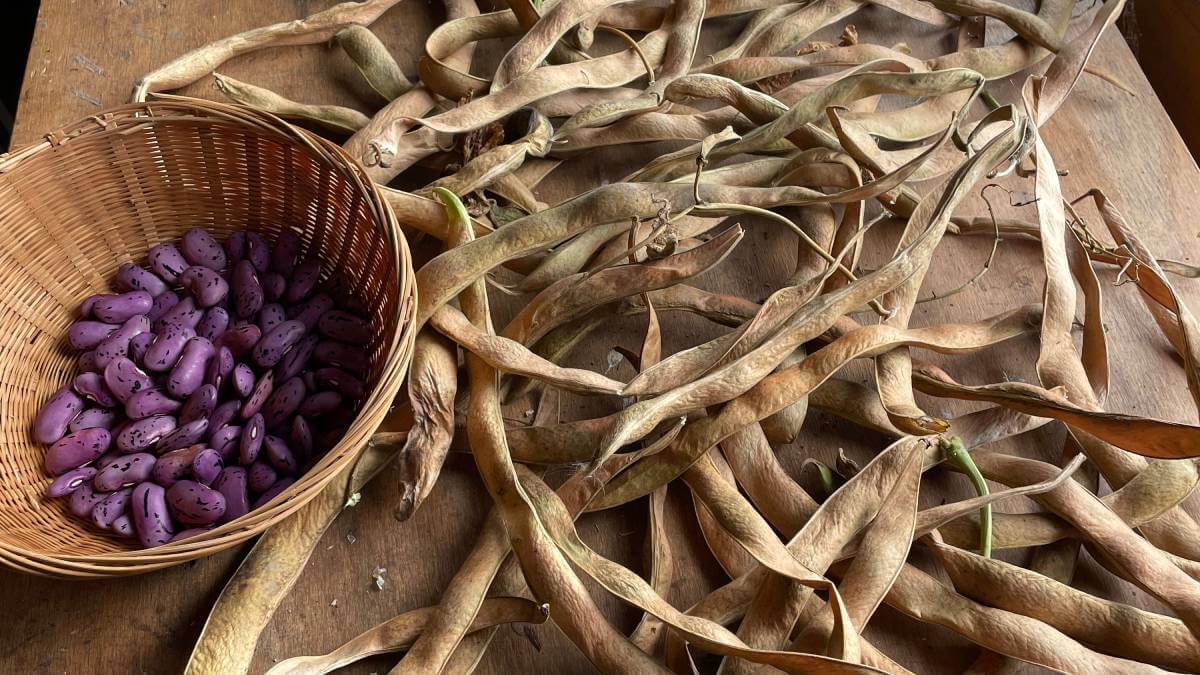
I was taught by an old hand decades ago that when saving tomato seeds, scrape them out of the fruit, put the seeds in a container/glass/cup, add a teaspoon of water and leave for a few days until it ferments, then put them in the strainer, rinse, spread on paper towel, dry and store. The fermentation is said to kill any germs/bacteria/fungi, etc that may damage plants/fruits when growing.